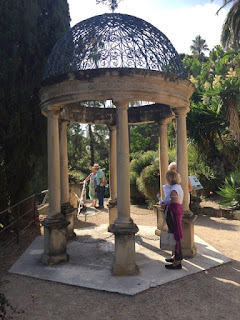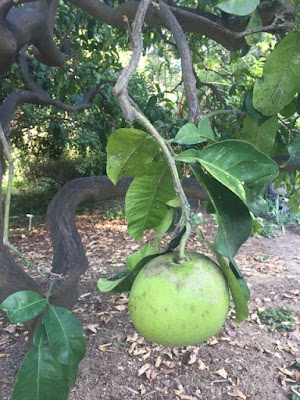After our long hot summer we thought it was a good idea to introduce the subject of 'watering' in our October meeting. Sue, who is pretty technical and has experience with trying out the different watering systems talked us through the subject and has written the follfowing article to help us to install a watering system ourselves and point out where some problems could arise.
Sue:
WATERING SYSYEMS: POINTS TO CONSIDER
Sue:
WATERING SYSYEMS: POINTS TO CONSIDER
Can I install a watering system myself?
Yes, but do your homework on the internet first. It is a steep learning curve and it helps to be nimble- fingered and have unlimited patience !
Does it matter what time of the year I install the watering system?
Yes – the tubing comes in rolls and has to be unrolled before using and stretched out in the sun to soften the rubber and straighten (place a rock at intervals on the tubing to keep it straight. And the earth needs to be soft so that the plastic pegs can be pressed by hand into the earth to hold the tubing in place. The pegs will snap if you try to hammer them into sun-baked or frozen earth.
Do I need special tools? Yes and no
* no - to cut the wider, thick tubing use a serated bread knife: to cut the medium and narrow tubing, use seceteurs or scissors.. A very long extension cable to the area being worked is needed for the electric kettle (for dipping the medium and narrow tubing to soften the ends for inserting joining sections, angled corners, T-connectors, end-stops, ON/OFF valves etc.
Where do I buy the components?
AmiTube, on the RN7 between Vidauban and Les Arcs. They are wholesalers but will sell to the public and nothing is packaged so easy to ensure fittings attach to whatever part and you can buy the quantities you need. Gardena is widely available in DIY and hardware shops but packaged and sold in fixed quantities.
Programmers for automatic watering systems
* the principle I apply to choosing progammers is similar to choosing washing machines – the simpler the better ! Do not buy the American brand Rainbird – you need a university degree in logic to figure out how it works and it seems that American and European logics are not the same!
* you may need more than one programmer. Why? Drought-tolerant plants in a flowerbed need less water than plants in pots which may need watering daily or twice daily in high summer. Or one area of the garden is served by one tap and another area by a different tap.
* if there are no instructions in English on the box, visit the relevant website and download them there. I am always surprised to see the range of languages Gardena (a German company) offer on goods sold in France but not in English, a second language most commonly used throughout the world!
Water pressure
* if the pressure is too high it will blow the heads/fittings off the micro-bore watering system.
* if you don’t know what your villlage water pressure is, telephone the mairie (Services des Eaux) – it is probably 6 bar.
* prevent this problem by using a water pressure reducer at the start of the medium tubing OR manually reduce the pressure by reducing the flow from the tap (it is easier to gauge the water pressure with a lever tap if, for example, the chosen rate of flow has the lever at half open).. If you employ a gardener, attach a weather-proof label to remind him not to change the pressure !
* plan the watering system to start from the highest point in the garden. If the area to be watered is higher than the mains tap then a wider diameter and thicker tubing is required to carry the water uphill.
* where the medium tubing joins the thick tubing use an ON/OFF lever valve and in winter disconnect the medium tubing at the valve and leave the valve open (lever in line with tubing) to drain the system. Why? – because even the metal valve will crack in a brisk frost if there is water in the tube.
Winterise the watering system
* before the first frost drain down the system and leave the ON/OFF lever valves in the open position (lever in line with the pipe) having first removed the pipe attached to the mains water.
* protect the garden taps (or lever tap) from frost EITHER by wrapping with strips of bubble wrap OR cut a length of 20 cm diam. grey plastic tubing to cover the tap, place over the tap and stuff bubble wrap all around the inside (better, thank you YouTube). OK, not as pretty as the pre-formed foam garden tap covers sold in DIY stores in UK (but not in France) but cheaper.
Whilst you are thinking winter, check that your mains water ON/OFF tap is well insulated.
Garden hose storageFrancoise McCredie told us about a wall-hung unit for storing garden hose so no more lugging heavy hose pipe around the garden. See website below, price has increased from the promo promo price mentioned, available in 10m, 20m and 30m lengths.
Watering by hand
I brought two watering hose sprayers – one with a “dead man’s” handle (when the handle is released the flow stops) which I did not recommend for two reasons: first, they last one summer and break and second, it is painful for arthritic hands to tense the muscles for an hour of watering. The second hose sprayer head is the one I recommended is made by Rainplay @ €6.99 from Lorgues L’Entrepot du Bricolage, guaranteed for five years. The chosen flow of water is controlled by the sliding yellow knob so you just hold the sprayer lightly.
Webstites:
https://www.youtube.com/watch?v=-aN2ZjxNAEc (using water bottle)
https://www.youtube.com/watch?v=xoxWEZSg-Pc (using foam coffee mugs)






























































